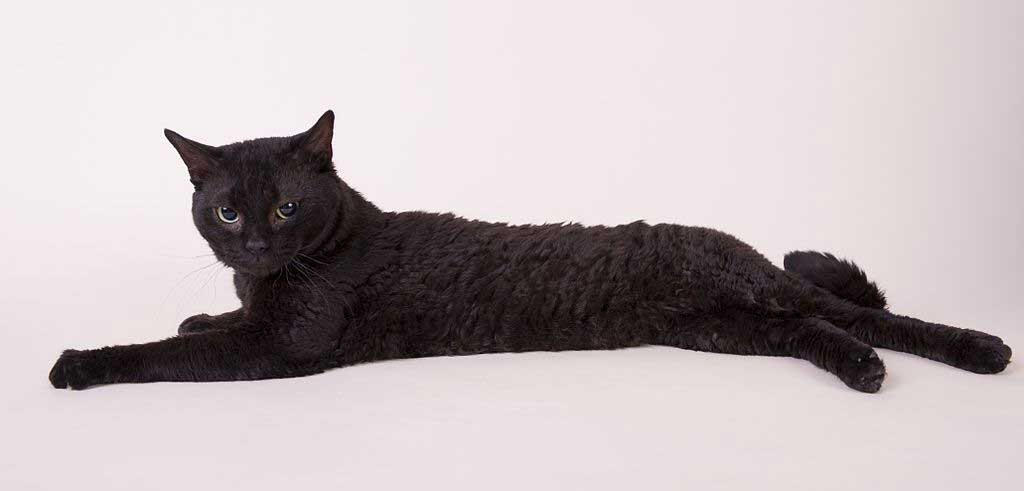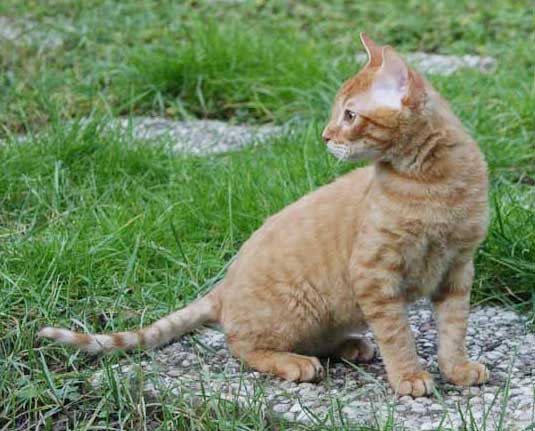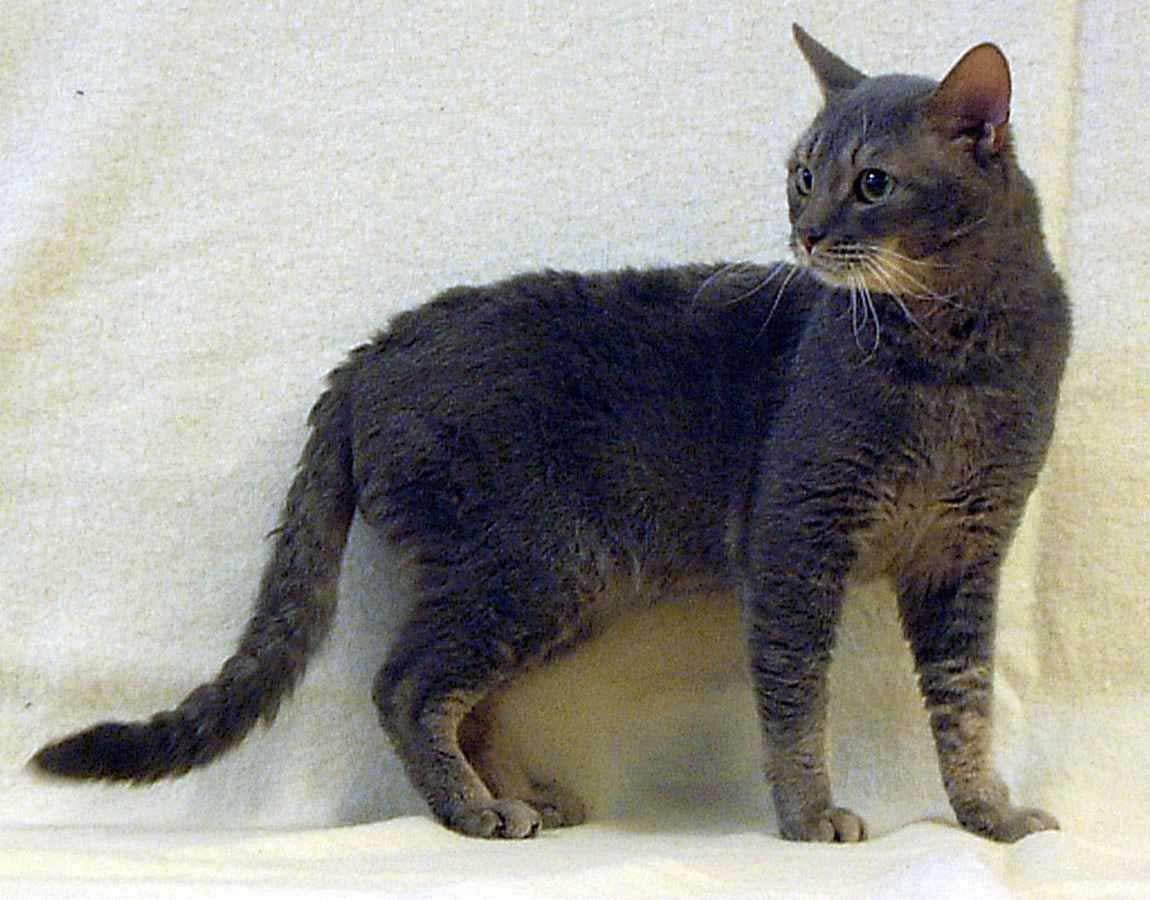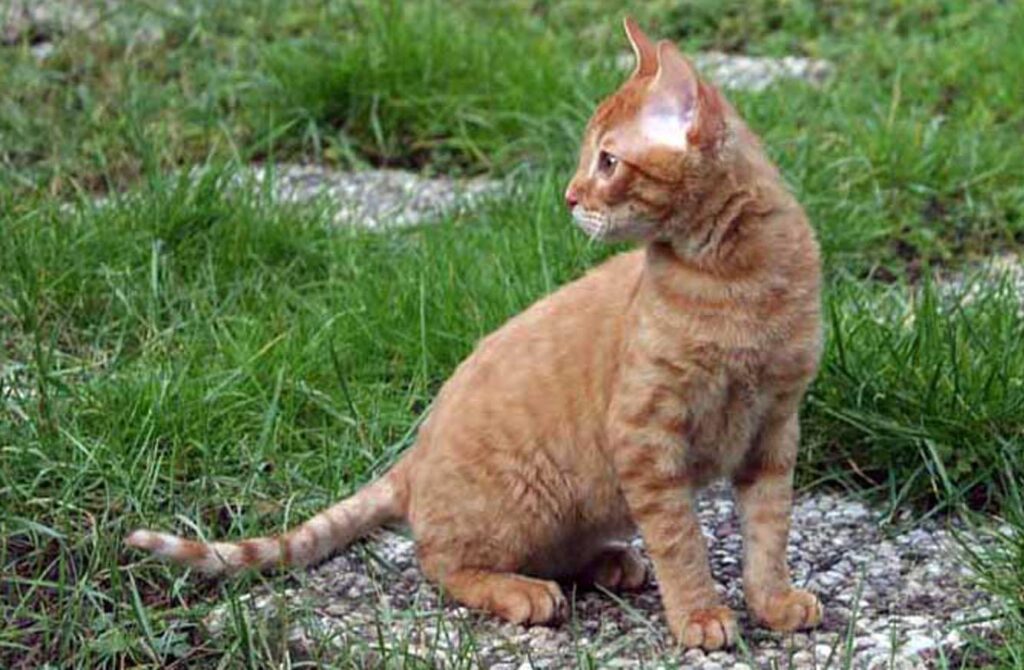Content |
|---|
Characteristics "German Rex"
Coexistence is important that you have with your new friend. Before considering the acquisition of a cat of the breed "German Rex" you know certain factors. You must take into account their character, their need for exercise, their interaction with other pets, their care and if you have small children, their level of tolerance towards them.
Joy4.0 out of 5 stars (based on 1 review)
|
Activity level4.0 out of 5 stars (based on 1 review)
|
Friendliness to other pets4.0 out of 5 stars (based on 1 review)
|
|---|---|---|
Friendliness to children5.0 out of 5 stars (based on 1 review)
|
Grooming requirements1.0 out of 5 stars (based on 1 review)
|
Vocality3.0 out of 5 stars (based on 1 review)
|
Need for attention3.0 out of 5 stars (based on 1 review)
|
Affection towards its owners5.0 out of 5 stars (based on 1 review)
|
Docility4.0 out of 5 stars (based on 1 review)
|
Intelligence4.0 out of 5 stars (based on 1 review)
|
Independence2.0 out of 5 stars (based on 1 review)
|
Hardiness5.0 out of 5 stars (based on 1 review)
|
History
The German Rex It, as the name reflects, a breed of German cat. In 1930, in a village in the Prussian region of Königsberg (today Kaliningrad, in Russia), Ema Schneider's family had a curly-haired cat. Named Munk and born from a cross between a Angora cat and Russian Blue Cat, it is said to be the first Rex (name given in reference to Astrex rabbits, who also have curly hair) of the modern era. But, specialists consider that Munk is not the true creator of the breed German Rex, since it was never part of a breeding program and its descendants have not been identified.

The first litters of Lämmchen y Blackie, another cat adopted by Mrs Scheuer-Karpin, produced straight-haired kittens. But in 1957 The first two curly-haired kittens were born from the union between Lämmchen and one of these kittens named Fridolin.
When Lämmchen he crossed paths with another farm cat in the neighborhood, gave birth to three straight-haired kittens. Rose Scheuer-Karpin decided to stay with one of them, who he called blackie 2. Lamb and Blackie 2 they in turn produced kittens with curly hair, and it was clear that the gene responsible for the mutation was recessive. In other words, to have curly hair and, Therefore, be a Rex, the kitten must receive a mutated gene from each of its parents. On the other hand, an individual who has inherited only one mutated gene keeps his coat smooth, but you can pass on this gene and give birth to curly-furred kittens if crossed with a curly-furred individual, or even with an individual with smooth fur but also a carrier of the recessive gene.
Lämmchen died in 1964, leaving many cats carrying the gene, which were the basis for the development of the breed and were exported to various countries. This was the case in Great Britain, where they met him Cornish Rex, in order to diversify the gene pool of this breed. In France, Marco Polo, A male german Rex property of Professor Letard, It was the first to be exhibited in public in 1960 in a contest organized by the Feline Club of Paris.
But, due to the lack of a well-structured breeding program, and probably also to the almost simultaneous appearance of other breeds of curly-haired cats in Great Britain, the german Rex developed very little and was even on the brink of extinction in the early years 70.
In fact, although it was recognized by the Fédération Internationale Féline (FIFé) and the Livre Officiel des Origines Félines (LOOF) french in 1982, and then for the World Cat Federation (WCF, based in Germany), the german Rex remains confidential. Not recognized by several major organizations, as the British Governing Council of the Cat Fancy (GCCF) or The International Cat Association (TICA), and is rarely present outside of its home country and its German-speaking neighbors (Switzerland and Austria).
La Cat Fanciers’ Association (CFA) does not recognize the German Rex as a race in its own right, considering that it is actually a Cornish Rex and registering their representatives as such.
In France, no individual with LOOF has been registered between 2003 and 2018, which makes it without a doubt one of the rarest cat breeds. All over the world, the cumulative number of registrations in the organizations that recognize it barely exceeds a few dozen a year.
Physical characteristics
The German Rex It is a medium-sized cat with a strong, muscular body and slender legs.. With regard to its height, corresponds to a European shorthair cat (Common european cat). The tail, average length, ends in a slightly rounded tip. On head round settle some ears slightly rounded with a wide base.
The most striking feature of the breed is the soft fur and regularly wavy. Due to the lack of top coat, the undercoat plush has a velvety appearance like that of a mole.
All the colors are allowed, except for chocolate, cinnamon and all its variations. It can also have any coat pattern: bicolor, tricolor, striped, but there should be no bald spots on the fur. The whiskers they are slightly shorter than in other cats and slightly curved.
Character and skills
German Rex |
||
|---|---|---|
 | ||
The german rex they are affectionate and form a strong bond with their family, often seeking your attention. They do not tolerate arousal and noise very well, but they are just as reluctant to be alone.
They are sociable and enjoy the company of other dogs and may even befriend a dog used to cats.. So, it is usually not a problem when adopted by a family that already has animals, except if these are small rodents or birds, in which case some caution must be exercised.
As a playful and active cat, can be an excellent companion for a child, provided that he has learned to interact with him and respect him. But, if the child is small, you should never be left alone with the animal without adult supervision; this applies to all cats, regardless of race.
It also, although they are active and love to run, the German Rex it is a breed of cat suitable for a flat environment, to which it fits perfectly. They prefer the cozy comfort of a heated home to the sometimes harsh weather conditions of the outside world, but they enjoy napping on a sunny balcony in summer.
Intelligent, he likes to be stimulated with games, whether it's going to find an object thrown by its owner or trying to solve a puzzle for cats. Likes family fun and rarely refuses to chase a fake stuffed mouse or roll a ball of yarn around the house.
Once he's satiated, he likes to cuddle with his owner, that can thus enjoy the softness of its toothed fur and its reassuring purr.
At the end, His character is very similar to that of his cousin the Cornish Rex.
Grooming and caring for the "German Rex"
The German Rex it is an easy cat to care for, since its beautiful coat only needs a weekly brushing to maintain its shine.
During this grooming session, it is also important to check that the teeth are healthy and without cavities, that the eyes are clean and that the ears have not accumulated dirt. If this is the case, cleaning with a damp cloth will prevent the appearance of infection.
Last, a cat's nails should be trimmed regularly with a nail clipper, but the time interval between these manicures varies from individual to individual, depending on your level of activity and whether you use a scratching post to a greater or lesser extent.
Health and nutrition

Due to its fine fur, the German Rex, just like the cat Sphynx, you need more energy to maintain your body heat. For this reason, needs more food than other breeds. However, make sure you don't overfeed them and provide all the important nutrients.
Obesity can cause various heart and/or joint problems. So, it is advisable to weigh your cat regularly to ensure that it maintains a reasonable weight, and consult a vet if you are overweight.
Life expectancy
12 to 14 years
For sale "German Rex"
The price of a kitten German Rex varies between the 800 and 1.000 EUR, without there being a significant difference between males and females.
But, the German Rex is a very rare breed of cat, hard to find even in your home country, and there are few kittens available.
Videos "German Rex"
|
German Rex Katze fängt Fliegen
|
HTTPS://youtu.be/mfHZSyO_ePw
German Rex. Pros and Cons, Price
|
|---|

